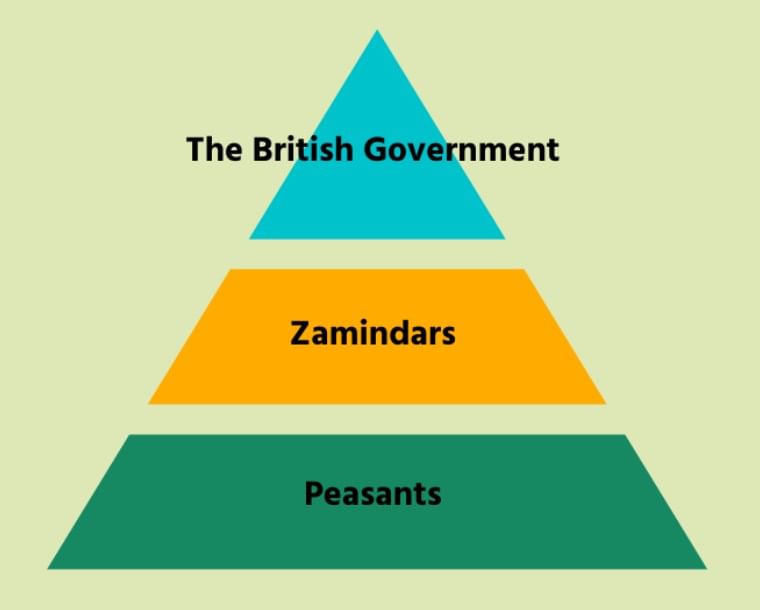UPSC Exam > UPSC Notes > History for UPSC CSE > Spectrum Summary: The Economic Impact of British Rule in India
Spectrum Summary: The Economic Impact of British Rule in India | History for UPSC CSE PDF Download
According to historians, at the beginning of the eighteenth century, India had some 23 percent of the world economy. This share came down to some 3 percent when India got independence.
A detailed survey of the economic impact of British rule follows.
Deindustrialization— Ruin of Artisans and Handicraftsmen
One-Way Free Trade
- Cheap and machine-made imports flooded the Indian market after the Charter Act of 1813 allowing one-way free trade for the British citizens.
- Tariffs of nearly 80 percent were imposed on Indian textiles so that Indian cloth could no longer be cheap.
No Steps Towards Modern Industrialisation
- The loss of traditional livelihood was not accompanied by a process of industrialization in India
Realization
- The feature of deindustrialization was the decline of many cities and a process of realization of India
The Impoverishment of Peasantry

- Transferability of land was one feature of the new settlement which caused great insecurity to the tenants who lost all their traditional rights inland.
- The peasant turned out to be the ultimate sufferer under the triple burden of the Government, zamindar, and moneylenders.
The Emergence of Intermediaries, Absentee Landlordism, Ruin of Old Zamindars
- The new zamindars, with increased powers but with little or no avenues for new investments, resorted to land grabbing and sub-infeudation. An increase in the number of intermediaries to be paid gave rise to absentee landlordism and increased the burden on the peasant.
Stagnation and Deterioration of Agriculture
- The cultivator had neither the means nor any incentive to invest in agriculture.
Famine and Poverty
- Regular recurrence of famines became a common feature of daily existence in India.
 Starving Indians beg for food at a British Army Post in 1897
Starving Indians beg for food at a British Army Post in 1897
Commercialization of Indian Agriculture
- Commercial crops like cotton, jute, groundnut, oilseeds, sugarcane, tobacco, etc., were more remunerative than food grains. Again, the cultivation of crops like condiments, spices, fruits, and vegetables could cater to a wider market.
- The commercialization trend reached the highest level of development in the plantation sector, i.e., in tea, coffee, rubber, indigo, etc., which was mostly owned by Europeans and the produce was for sale in a wider market.
Destruction of Industry and Late Development of Modern Industry
- Indian industry was steadily destroyed. The destruction of the textile competition of India is a glaring example of the deindustrialization of India.
- A thriving shipbuilding industry was crushed. Surat and Malabar on the western coast and Bengal and Masulipatnam on the eastern coast were known for their shipbuilding industries.
- Indian traders, moneylenders, and bankers had amassed some wealth as junior partners of English merchant capitalists in India. Their role fitted in the British scheme of colonial exploitation. The Indian moneylender provided loans to hardpressed agriculturists and thus facilitated the state collection of revenue.
- The first cotton textile mill was set up in 1853 in Bombay by Cowasjee Nanabhoy and the first jute mill came up in 1855 in Rishra (Bengal). The industrial development was characterized by a lopsided pattern—core and heavy industries and power generation were neglected and some regions were favored more than the others—causing regional disparities
Nationalist Critique of Colonial Economy
- Dadabhai Naoroji, the 'Grand Old Man of India’, who after a brilliant analysis of the colonial economy put forward the theory of economic drain in Poverty and un-British Rule in India.
 Dadabhai Naoroji: Grand Old Man of India
Dadabhai Naoroji: Grand Old Man of India
- The essence of nineteenth-century colonialism, they said, lay in the transformation of India into a supplier of foodstuffs and raw materials to the metropolis, a market for metropolitan manufacturers, and a field for the investment of British capital.
- British Policies Making India Poor, The problem of poverty was seen as a problem of raising the productive capacity and energy of the people or as a problem of national development, thus making poverty a national issue.
- Growth of Trade and Railways to Help Britain, The development of railways, they argued, was not coordinated with India's industrial needs and it ushered in a commercial rather than an industrial revolution. The net effect of the railways was to enable foreign goods to outsell indigenous products.
- One-Way Free Trade and Tariff Policy, The nationalists claimed that one-way free trade was ruining the Indian handicrafts industry, exposing it to premature, unequal, and unfair competition
- Effect of Economic Drain, According to nationalist estimates, the economic drain at that time was—
i. more than the total land revenue, or
ii. half the total government revenue, or
iii. third of the total savings
Economic Issue a Stimulant to National Unrest
The nationalist agitation on economic issues served to undermine the ideological hegemony of alien rulers over Indian minds that the foreign rule was in the interest of Indians, thus exposing the myth of its moral foundations.
First Stage
- The Period of Merchant Capital (Mercantilism), often described as the Period of Monopoly Trade and Direct Appropriation (or the Period of East India Company's Domination, 1757-1813), was based on two basic objectives—
(i) to acquire a monopoly of trade with India, against other English or European merchants or trading companies as well as against the Indian merchants;
(ii) to directly appropriate or take over governmental revenues through control over State power. - The only changes made were:
(i) in military organization and technology which native rulers were also introducing in their armed forces, and
(ii) in administration at the top of the structure of revenue collection so that it could become more efficient and smooth. - In this phase, there was a large-scale drain of wealth from India which constituted 2-3 percent of Britain's national income at the time.
Second Stage
- Owing to its mode of exploitation being trade, this stage is also termed as Colonialism of Free Trade. In this phase the following dominant features were visible:
- India's colonial economy was integrated with the British and world capitalist economy.
- Free entry was also granted to the British capitalists to develop tea, coffee, and indigo plantations, trade, transport, mining, and modern industries in India.
- The Permanent Settlement and the Ryotwari system in agriculture were introduced to transform the traditional agrarian structure into a capitalist one.
- The administration was made more comprehensive and included villages and outlying areas of the country.
- Personal law was largely left untouched since it did not affect the colonial transformation of the economy.
- Modern education was introduced to provide cheap manpower to the vastly expanded administration. It was also aimed at transforming India's society and culture for two reasons:
(a) create an overall atmosphere of change and development and,
(b) give birth to a culture of loyalty to the rulers. - The taxation and the burden on peasants rose sharply due to economic transformation and costly administration (civil as well as military).
- India absorbed 10 to 12 percent of British exports and nearly 20 percent of Britain’s textile exports.
- The Indian army was used for British expansion of colonialism in Asia and Africa.
Third Stage
- The third stage is often described as the Era of Foreign Investments and International Competition for Colonies. These changes were as follows.
- Britain’s industrial supremacy was challenged by several countries of Europe, the United States, and Japan.
- Asa result of the application of scientific knowledge to the industry, the pace of industrialization increased sharply.
- The British thus tried to justify their rule over Indians for centuries to come—all in the name of civilizing a barbaric people—“the White Man’s burden ".
The document Spectrum Summary: The Economic Impact of British Rule in India | History for UPSC CSE is a part of the UPSC Course History for UPSC CSE.
All you need of UPSC at this link: UPSC
|
216 videos|855 docs|219 tests
|
FAQs on Spectrum Summary: The Economic Impact of British Rule in India - History for UPSC CSE
| 1. What is deindustrialization and how did it impact artisans and handicraftsmen in India during British rule? |  |
Ans. Deindustrialization refers to the decline or destruction of industries in a particular region or country. During British rule in India, the British policies and economic practices led to the deindustrialization of the country. This had a devastating impact on artisans and handicraftsmen as their traditional industries were destroyed. They lost their livelihoods and were forced into poverty and unemployment.
| 2. How did British rule lead to the impoverishment of the peasantry in India? |  |
Ans. British rule in India had a detrimental effect on the peasantry. The British introduced land revenue systems that placed a heavy burden on the peasants, leading to increased indebtedness and poverty. The British also imposed high taxes and introduced cash-crop cultivation, which further impoverished the peasantry. The loss of traditional agricultural practices and exploitation by intermediaries left the peasants in a state of destitution.
| 3. What were the consequences of the emergence of intermediaries and absentee landlordism during British rule in India? |  |
Ans. The emergence of intermediaries and absentee landlordism during British rule in India had severe consequences. The intermediaries acted as middlemen between the peasants and the British authorities, exploiting the peasants and extracting high rents and taxes. The absentee landlords, who were often British or Indian elites, neglected their estates and focused solely on extracting profits. This led to the ruin of old zamindars (landowners) and further impoverishment of the peasants.
| 4. How did the British rule contribute to the stagnation and deterioration of agriculture in India? |  |
Ans. British rule in India contributed to the stagnation and deterioration of agriculture in multiple ways. The introduction of cash-crop cultivation led to the neglect of food crops, resulting in a decline in agricultural productivity and food scarcity. The British policies also favored the export of raw materials, leaving little incentive for innovation or modernization in agriculture. Lack of infrastructure development, irrigation facilities, and access to credit further hindered agricultural growth.
| 5. How did the commercialization of Indian agriculture under British rule impact the overall economy? |  |
Ans. The commercialization of Indian agriculture under British rule had mixed effects on the overall economy. While it led to the expansion of cash-crop cultivation and increased agricultural production for export, it also disrupted the traditional self-sufficient agricultural practices. The focus on commercial crops resulted in a decline in food production, leading to famines and food shortages. Additionally, the profits generated from commercial agriculture were largely repatriated to Britain, contributing to the economic drain and underdevelopment of India.
Related Searches

















